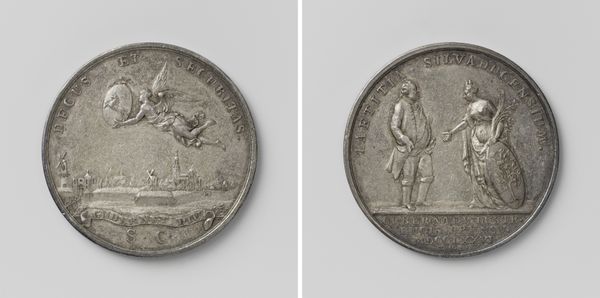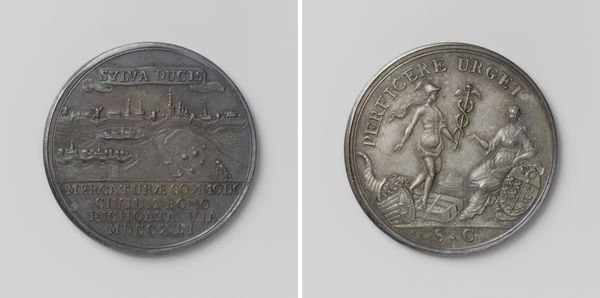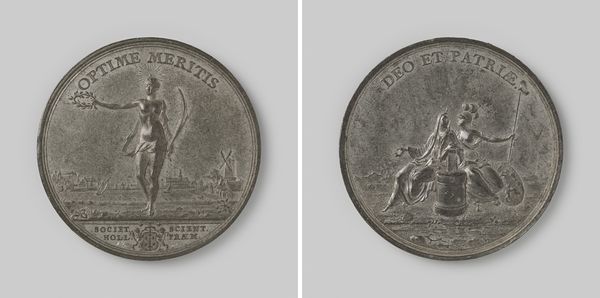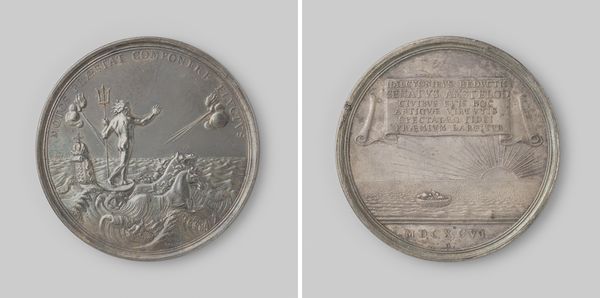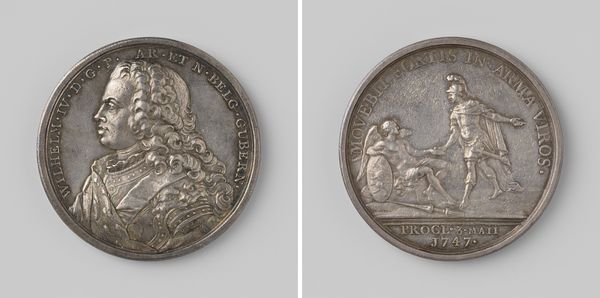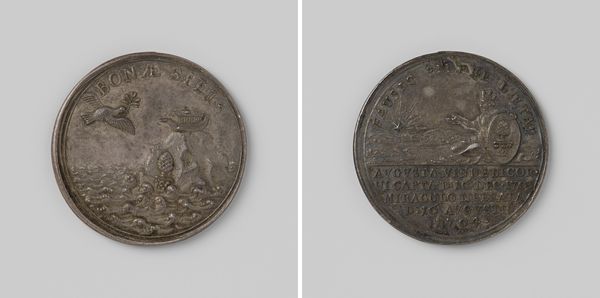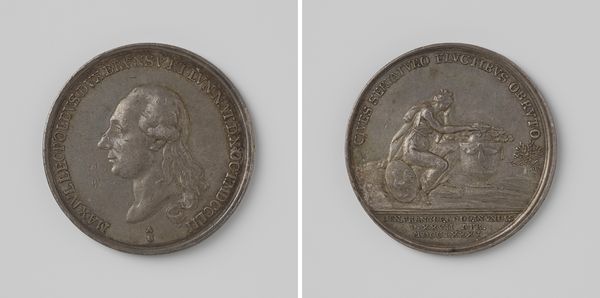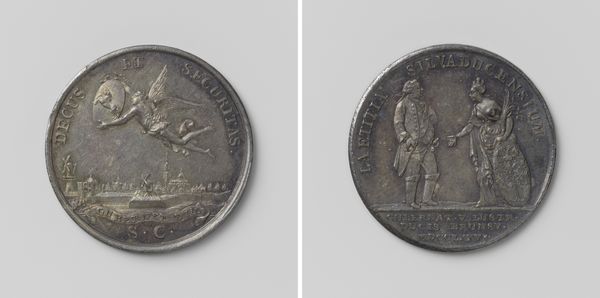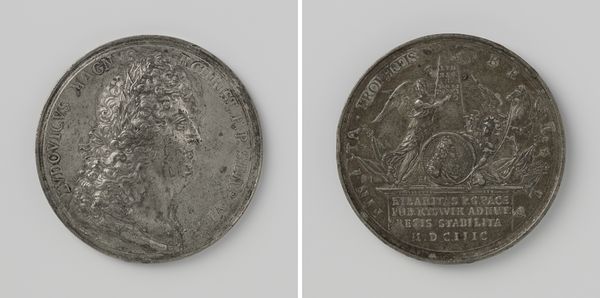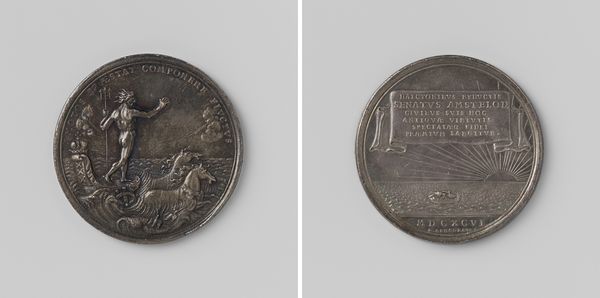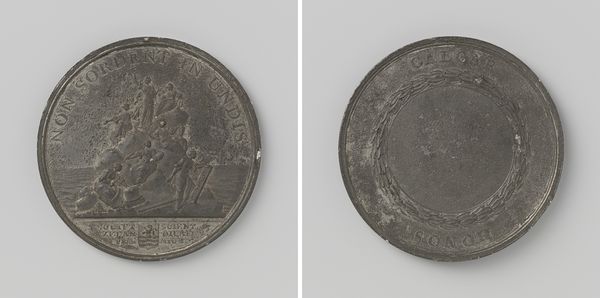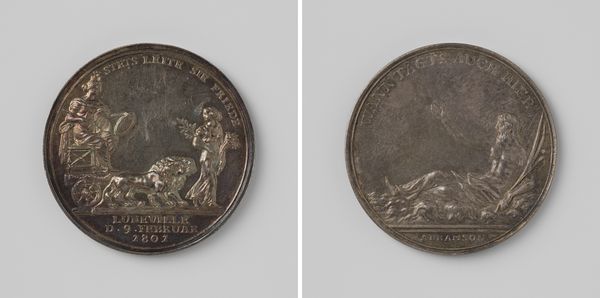
metal, relief, engraving
#
portrait
#
medal
#
narrative-art
#
baroque
#
metal
#
sculpture
#
relief
#
figuration
#
form
#
11_renaissance
#
line
#
engraving
#
statue
Dimensions: diameter 5.1 cm, weight 42.89 gr
Copyright: Rijks Museum: Open Domain
Curator: This is a commemorative medal by Nicolas Chevalier, dating back to 1705. It celebrates the opening of the riding school in Utrecht. Editor: My first impression is how detailed this work is, especially considering its size. The intricacy of the figures and lettering are pretty remarkable on a medal. What material would this have been made from? Curator: Most likely some kind of metal, maybe silver or a base alloy. It's created using engraving techniques, which allow for such sharp lines and textual elements, and speaks to a precise craft. These medals acted as important symbols and declarations of local progress, in this case a riding school that was the latest improvement for the people. Look how carefully the figures and architectural structures were realized. Editor: Exactly! You can see the attention devoted to crafting this image as a symbol of societal advancement. Who would have produced something like this? Were they artisans of the era? Curator: Well, certainly skilled artisans, familiar with producing items on commission, following set aesthetic standards while also trying to portray local imagery and stories. On the medal’s one side, we see allegorical representation of a mounted centaur charging, and on the other a more sedentary female figure next to classical buildings; a very baroque taste in symbolic figures. Editor: It's fascinating how a relatively common material, metal, in the hands of a skilled engraver can convey the ambition and cultural values of a particular historical moment, Utrecht's riding school celebrated in material form, a medal passed around among nobles and burghers. These small scale productions of luxury goods speak of a whole system of workshop culture. Curator: Agreed. Beyond just the technical aspects, these types of works create a strong link to the culture and civic pride of the time. The choice of certain images and the specific engraving style all echo the era's distinct aesthetics and core aspirations. Editor: When you think about it, that metal disc was quite a feat of communicating power, commerce and taste. I definitely learned something about this piece's origins. Curator: Me too! I now look differently at such baroque portraiture, trying to gauge its symbolic weight while understanding production costs of that particular item and how it may relate to taste, consumption, and workshop practices.
Comments
No comments
Be the first to comment and join the conversation on the ultimate creative platform.
